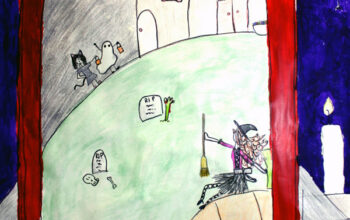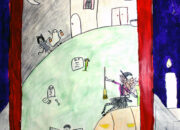Throughout history, tears have been the subject of fascination and introspection—an enigmatic bodily response that evokes a myriad of interpretations. What do these droplets of emotion signify in our lives, both in mundane moments and during profound experiences? Understanding the multifaceted meanings of tears can shift our perspective on emotional expression, unveiling the depths of human experience beyond the mere act of crying. This exploration delves into the symbolic realm of tears, their spiritual significance across various religions, their psychological implications, and the syllogistic reasoning that connects us to this universal phenomenon.
Symbolic Resonance of Tears
Tears, often associated with sadness, serve as a powerful symbol across many cultures. They embody sorrow, but they also communicate joy, relief, and even catharsis. The act of crying can transcend the simple expression of sentiment; it becomes a narrative of the soul, allowing individuals to convey their hidden struggles and triumphs. Symbolically, tears can be seen as a flow of purification—a cleansing of the emotional palate that facilitates personal growth.
Consider the imagery of a storm. Just as rain nourishes the earth, so too do tears nourish the spirit, providing a vital release of pent-up emotions. This dual nature—harmonious and tumultuous—infuses tears with a sense of paradox. From literature to visual art, they appear as essential motifs, prompting reflections on vulnerability and resilience.
Spiritual Significance of Tears
Across various religious traditions, the significance of tears takes on profound trajectories. In Christianity, tears are frequently viewed as manifestations of penitence and redemption. The biblical narrative highlights numerous instances where tears accompany genuine sorrow for sin, illustrating a deep connection between feelings of guilt and the path towards spiritual awakening. For instance, the tears of Mary Magdalene at the feet of Jesus encapsulate both the anguish of her past and the hope of forgiveness, presenting a poignant reminder of the transformative power of emotion.
In Islamic tradition, tears are often regarded as symbols of sincerity and devotion. The act of crying during prayer or supplication is seen as a reflection of one’s true relationship with Allah. It emphasizes humility and the acknowledgment of one’s imperfections, creating a profound bond between the individual and the divine. Such interpretations elevate tears to a sacred realm, showcasing them as vessels of spiritual connection and humility.
In contrast, tears in Eastern philosophies might not carry the same weight of sin or redemption. Instead, they can symbolize the transient nature of emotions and existence. Both Buddhism and Hinduism emphasize the impermanence of all things, suggesting that tears, like all emotions, are fleeting and should be approached with mindfulness. This perspective fosters a greater understanding of emotional experiences, encouraging individuals to recognize and subsequently transcend their attachments to sorrow.
Psychological Dimensions of Tears
The emotional landscape of tears extends further into the realm of psychology. Scholars have long studied the complex interplay between tears and mental health. In various psychological frameworks, tears are posited as an essential form of emotional release, facilitating healing from grief, stress, and trauma. Psychologist William Frey, known for his research on the biochemical composition of tears, posits that crying serves not merely as an expressive outlet but also as a physiological mechanism for detoxification—shedding stress hormones and offering a sense of relief.
From a psychological perspective, crying is also deeply intertwined with connection and empathy. When we witness someone else shed tears, a confrontational empathy surges within us, prompting a shared experience of vulnerability. This interconnectedness can serve as a catalyst for deeper relationships, fostering both understanding and compassion among individuals.
Connecting Syllogisms and Tears
The exploration of tears finds a fascinating parallel in syllogism, which involves logical reasoning in the form of deductive arguments. At its core, syllogism demonstrates how premises lead to a conclusion. For instance: “All humans experience emotions; tears are a response to emotions; therefore, all humans cry.” This logical progression highlights a universal truth about human experiences. The conclusion resonates with the idea that tears, irrespective of their context, connect us on a fundamental level—reflecting the shared vulnerabilities of our existence.
Extending this logic, one can infer that the act of crying transcends the boundaries of individual suffering or joy; it creates a collective understanding shaped by shared human experiences. Thus, the syllogistic reasoning enriches our comprehension of tears—transforming them from mere physiological phenomena to profound expressions of our collective humanity.
Conclusion
Tears, with their rich tapestry of meanings, serve as bridges connecting our emotional, spiritual, and psychological realms. They are vessels of release, reflection, and resonance, allowing us to understand ourselves and each other on deeper levels. Whether viewed through the lens of spirituality, psychology, or symbolism, tears invite us to embrace the complexity of human emotion, challenging us to reconsider our perceptions of vulnerability and strength. Ultimately, in acknowledging the multifaceted nature of tears, we open ourselves to a more compassionate understanding of the human experience—transforming droplets of sorrow into symbols of shared hope and connection.












